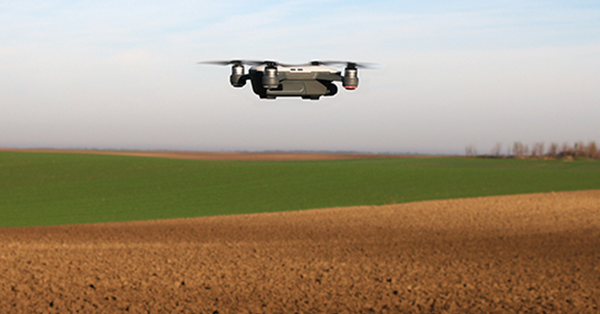The realm of technology and IT witnessed an awe-inspiring transformation in robotics in the late 1900s—the birth of swarm robotics. Picture this: a group of robots working together seamlessly, like a harmonious dance, each one coordinating with its peers to accomplish complex tasks. This is no longer confined to the realms of science fiction but has become a tangible reality in the world of modern robotics.
Swarm robotics is a breakthrough concept that draws inspiration from nature, particularly the behaviors of social insects such as ants and bees. By emulating these collaborative and adaptive behaviors, researchers have unlocked new possibilities in robotics. It goes beyond conventional isolated robots, as it explores the profound potential that emerges when robots come together as a unified collective, sharing knowledge, adapting to changing environments, and making decisions collectively.
In this blog, we will use insights from the Internet 2.0 Conference to explore swarm robotics, its foundational principles, real-world applications, and the transformative impact it brings to industries and society. Let's dive into the world of collaborative and adaptive robotic systems explained by professionals at IT conferences and events.
Collaborative Robotics: Synergy In Numbers
Machines and humans work hand in hand, creating a harmonious symphony of efficiency and innovation. Collaborative robotics, also known as cobotics, represents a paradigm shift in the field of robotics, offering a glimpse into a future where machines and humans collaborate seamlessly.
Imagine a scenario in a factory where robots and human workers complement each other's strengths, working side by side to achieve common goals. These collaborative robots are designed to be safe, intelligent, and easily programmable, enabling them to interact with human workers without the need for physical barriers. This breakthrough in safety and ease of use has led to an increasing adoption of cobots across industries.
Collaborative robots are not only redefining manufacturing processes but also finding applications in various sectors. In healthcare, cobots assist surgeons in delicate procedures, leading to improved precision and reduced surgical times. In logistics, they streamline warehouse operations by transporting goods and collaborating with human workers in inventory management.
IT conferences in 2024 project that one of the most significant advantages of collaborative robotics is the synergy that emerges when machines and humans work together. By leveraging the strengths of each, cobots enhance productivity, enable faster task completion, and reduce the risk of workplace injuries.
According to research by the International Federation of Robotics, the market for collaborative robots has been growing at an annual rate of around 40% since 2017. This surge in demand reflects the increasing recognition of the transformative potential of collaborative robotics.
Emergence Of Adaptive Swarm Systems: Machines That Learn Together
In the realm of robotics, the emergence of adaptive swarm systems has captivated researchers and technology enthusiasts alike. Inspired by the collective intelligence seen in social insects, these systems bring a new dimension to robotic capabilities. Below are some of the key elements of swarm robotics that upcoming tech events are expected to elaborate upon.
- Self-Organization:
Adaptive swarm systems operate without a central controller. Instead, individual robots communicate and collaborate, leading to emergent behaviors and decision-making at the swarm level. This self-organization empowers the robots to adapt to dynamic environments and changing tasks.
- Learning from Nature:
Researchers draw inspiration from ant colonies and bee hives, where individuals work as a cohesive unit to achieve common goals. By emulating these principles, adaptive swarm systems harness the power of collective intelligence in machines.
- Enhanced Adaptability:
Swarm robots possess unparalleled adaptability due to their ability to learn together. As individual robots learn from their experiences and share knowledge with the swarm, the entire group becomes more adept at solving complex tasks and navigating challenges.
- Real-World Applications:
Adaptive swarm systems have diverse applications. In disaster scenarios, swarm robots collaborate to search for survivors, navigate debris, and assess hazardous environments. They also excel in environmental monitoring, precision agriculture, and exploration missions.
- Scaling Intelligence:
As the swarm size increases, so does the overall intelligence of the system. The collective knowledge and experience of the robots grow exponentially, making larger swarms even more effective at problem-solving.
As we venture into the world of adaptive swarm systems, we witness the transformative potential of collaborative and adaptive robotics; a vast topic that renowned IT conferences will explore in 2024. By learning together, these machines open up new possibilities in various domains, contributing to a future where intelligent robots work in harmony to tackle complex tasks and benefit humanity.
Applications Of Swarm Robotics: From Factories To Environmental Conservation

Swarm robotics, with its captivating collaborative and adaptive features, has paved the way for a multitude of applications across various industries. These cohesive robotic systems are transforming the way tasks are accomplished, from traditional manufacturing to critical environmental conservation efforts. Here are insights from Internet 2.0 Conference that portray the technological edge that swarm robotics has provided industries with.
- Factory Automation:
In the manufacturing sector, swarm robotics has revolutionized production processes. Collaborative robots work in harmony to optimize assembly lines, manage inventory, and handle intricate tasks.
According to a report by the Boston Consulting Group, the adoption of collaborative robots in manufacturing is expected to grow by over 10% annually, leading to increased efficiency and reduced operational costs.
- Search and Rescue Missions:
In disaster-stricken areas where human intervention is challenging, swarm robots shine. These intelligent machines collaborate to search for survivors, assess hazardous environments, and deliver crucial supplies. Their ability to navigate complex terrains swiftly improves the chances of saving lives and minimizing risks to human rescue teams.
- Environmental Monitoring:
In the realm of environmental conservation, swarm robotics plays a pivotal role. These robots are deployed to monitor endangered species, assess pollution levels in water bodies, and track climate change impacts. Their ability to cover large areas simultaneously allows scientists to collect real-time data efficiently, aiding conservation efforts.
- Agriculture and Farming:
Swarm robotics is transforming agriculture by optimizing crop cultivation. Collaborative robots collaborate to sow seeds, apply fertilizers precisely, and harvest crops efficiently. The World Health Organization predicts that the world's population will reach 9.7 billion by 2050, driving the need for sustainable agricultural solutions.
- Surveillance and Security:
In security applications, swarm robots provide enhanced surveillance capabilities. Deployed to monitor large areas, these robots collaborate to detect and respond to security threats effectively, ensuring safety and protecting valuable assets.
As technology continues to evolve, the potential for these collaborative and adaptive robotic systems to shape a sustainable and efficient future becomes increasingly promising. Experts at upcoming tech events are expected to spread awareness about embracing the diverse applications of swarm robotics to create a positive impact on society and the environment.
Challenges: Navigating The Swarm Robotics Frontier

As swarm robotics emerges as a promising technology, it faces a unique set of challenges that require thoughtful navigation. Using insights from IT conferences and events, let's explore the hurdles that researchers and developers encounter in the field.
- Coordination and Communication:
Ensuring seamless coordination and communication among swarm robots can be complex, especially as the number of robots increases. Researchers must devise efficient algorithms and protocols to facilitate smooth interactions within the swarm.
- Scalability:
As swarm size grows, maintaining optimal performance becomes a challenge. Coordinating larger swarms while preserving cohesion and synchronization demands innovative solutions.
- Robustness:
Swarm robots often operate in unpredictable and harsh environments, making robustness a critical concern. These machines must be resilient to external disturbances and capable of self-recovery in case of failures.
- Ethical Considerations:
The integration of swarm robotics raises ethical questions, particularly concerning job displacement and privacy concerns. Striking a balance between automation and human involvement is essential to ensure ethical and responsible use.
Swarm Robotics: Future Prospects
As AI technology evolves, swarm robots are expected to become even smarter and more adaptable. Integrating advanced AI algorithms will enable these robots to make more sophisticated decisions and tackle complex tasks effectively.
The future of swarm robotics envisions a harmonious collaboration between humans and robots. By combining human creativity and problem-solving skills with the efficiency of swarm robots, we can unlock new possibilities in various industries.
The potential for swarm robotics extends beyond manufacturing and disaster response, and this is another aspect IT conferences in 2024 will explore. From space exploration to healthcare and infrastructure maintenance, swarm robots hold promise in revolutionizing multiple domains.
Additionally, Swarm robotics can contribute to sustainability efforts by optimizing resource usage and reducing waste. Its applications in agriculture, environmental conservation, and energy management can drive positive environmental impacts.
Bottom Line
The emergence of swarm robotics has ushered in a new era of collaborative and adaptive robotic systems, transforming industries and revolutionizing our approach to automation. With machines learning together and collaborating seamlessly, swarm robotics presents a promising vision of a future where human and robotic intelligence synergize to tackle complex challenges.
As this technology continues to evolve, IT conferences in 2024, like Internet 2.0 Conference play a crucial role in shaping the trajectory of swarm robotics. By fostering knowledge exchange, collaboration, and innovation, this platform empowers researchers, policymakers, and industry leaders to collectively navigate the swarm robotics frontier, ensuring responsible and ethical advancements that lead us towards a brighter, more efficient future.





